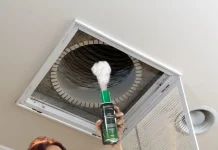When considering a plumbing system for your home or residence, you must first ensure that waste efficiently and effectively exits the structure into the municipal sewer system or septic tank. However, your ductwork is bidirectional.
A specialized fitting called a p-trap creates a powerful barrier that stops sewer gases and odors from entering your home. This trap can be used in any plumbing system that uses a drain and receives sanitary waste from baths, showers, and sinks.
1. What are P-Traps and what they are used for
If you look at the drain pipe under your sink, you will see a curve in the pipe that resembles a “U” or “P” shape. P-traps are examples of this type.
The P-type trap is a special-purpose elbow in drainage pipes and wastewater pipes. The bend in the pipe contains a small pocket of water that blocks toxic, smelly sewer gases, such as methane, from entering your home through the pipe. Additionally, if you accidentally drop something down the drain (such as a wedding ring), you can usually retrieve it from the nearest P-trap.
You can think of a P-trap as a useful barrier that stops bad odors from “coming up” and prevents objects from “going down” that shouldn’t be in the pipe. Most modern homes have a P-trap under every toilet, sink, shower, and bathtub.

2. How does P-Trap work?
P-type traps, named for their shape, contain a U-shaped elbow that filters wastewater as it enters the piping system. The trap connects to the sink, tub, and shower with a J-bend on one end and then into the drainage system. A J-bend is the portion of a p-bend that resembles the letter J.
The elbow in the P-trap collects water in the curve, creating a 1-½ inch to 2-inch water seal at the weir, preventing sewer gases and odors from entering the home. The weir is the upper end of the p-trap where water will begin to overflow into the wall tube. Each time the unit is used, new wastewater is flushed through the p-trap, replacing the old water in the curve with fresh water. P-traps also collect debris and solids that enter the drainage system. Its U-shaped shape traps sediment and prevents it from entering the drain.
3. How to install a P-type trap
● Sink P-type trap: measure and cut the wall pipe to the required length. Insert the wall tube into the connector, making sure to use a slip joint gasket to ensure a seal. Tighten the seal using the appropriate size nuts provided with the kit.
Then place the nut and washer on the tailpiece that connects to the fixture’s drain pipe. Attach the J-bend to the tailpiece, secure the seal with another washer, and tighten the seal with the supplied nuts. Its tubular design and simple installation allow you to easily snake your drain pipe or disconnect your P-trap to remove debris.
● Shower Trap: This type is usually located at the center drain of the shower. Following the same method, measure and cut the drain pipe. When installing a fitting to a drain pipe, you can use one of four connection types: threaded, solvent, or rubber caulk.
After determining the type of connection you want to use, install the drain pipe and tighten the nuts. Use PVC or ABS fittings to make any desired changes in direction.
Locate the P-trap under the shower outlet. Dry install drain pipes, P-traps, and fittings to ensure correct placement. Disassemble these parts and solvent weld the P-trap, shower adapter, and fittings.

4. Common P-type trap problems
There are two common problems with P-traps, which we’ll cover below: clogged and dry P-traps.
1) Clogs
Because of the way P-traps bend, foreign objects can easily get caught in the bends and cause blockages. This is especially likely to happen if something gets into the drain that shouldn’t be there, such as wipes, paper towels, or large amounts of hair.
Clogs in P-traps can be easily cleared by using a drain snake to reach in and pull or push out the clog. If the clog is severe, you may need to remove the P-trap from the adjacent pipe and clean it.
Remember: Over time, things like grease, sediment, dead skin, and soap scum can build up in your pipes, making clogs more likely to occur. If you frequently experience clogs, and these clogs occur outside of your home’s P-trap, you may want to consider professional drain cleaning as a long-term solution.
2) Dry P-type trap
The typical cause of a P-trap drying out is evaporation. However, P-traps can also dry out due to other problems, such as leaks, water-absorbing blockages, or dry winter winds entering the pipes. Once the water evaporates or leaks out of the P-trap, you will start to notice the unpleasant smell of sewer gas entering your home.
The easiest way to solve or prevent this problem is to run a gallon or more of water into each drain line in your home about every three weeks. This is especially important in the winter when P-traps are most likely to dry out. P-traps are an important part of your plumbing system and require no routine maintenance. However, like any other ductwork, they may need to be replaced over time.

























![InstaPro APK Download Latest Version 2023 [Anti Ban]](https://olo.my.id/wp-content/uploads/2023/10/instapro-100x70.jpg)
